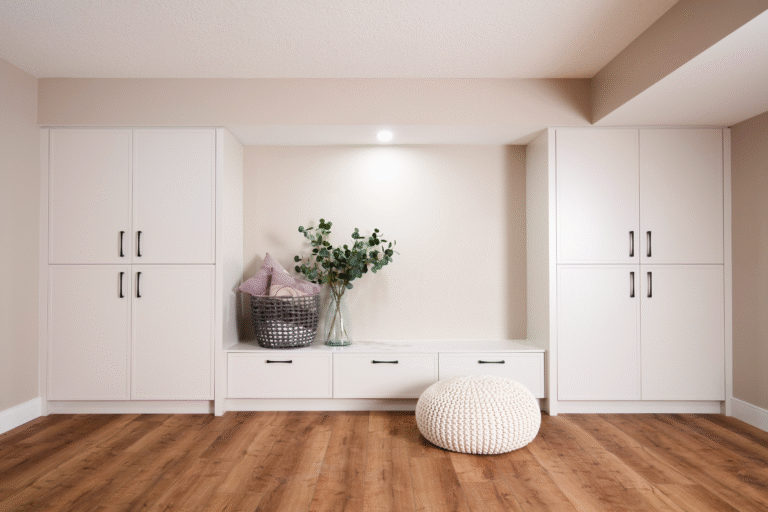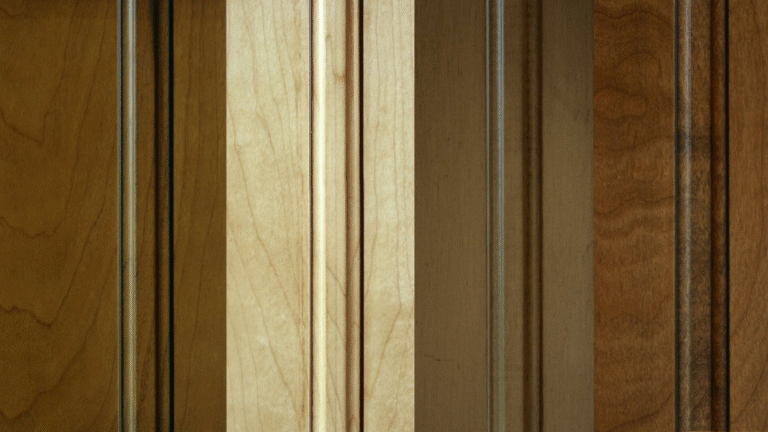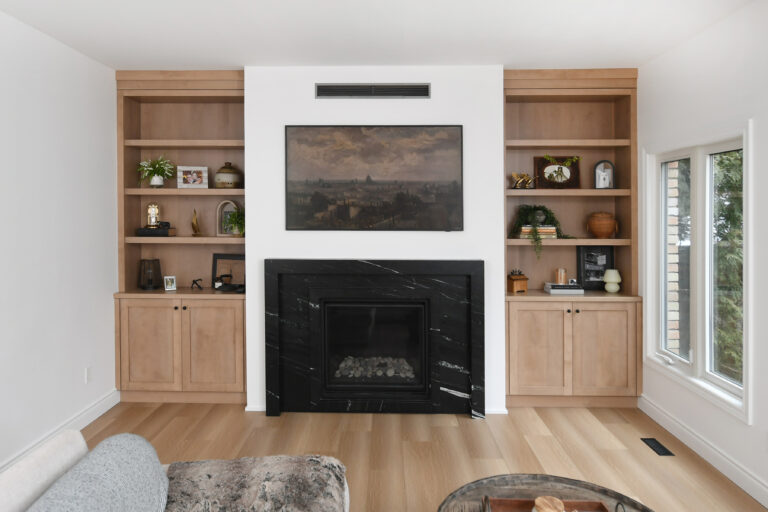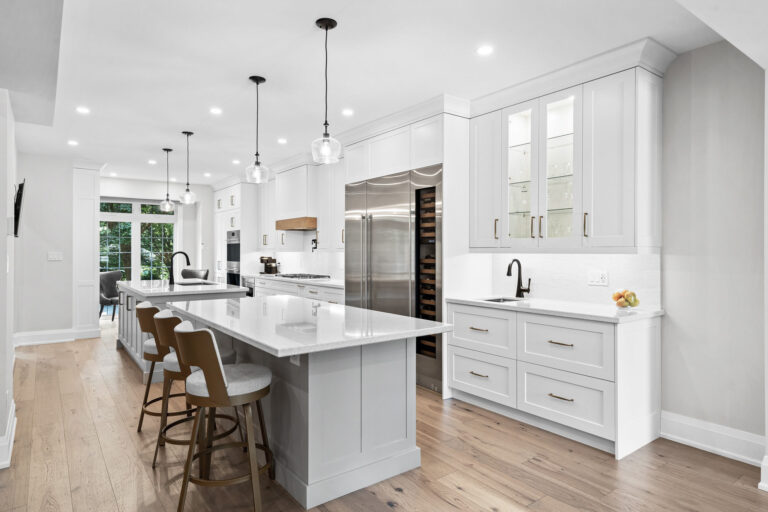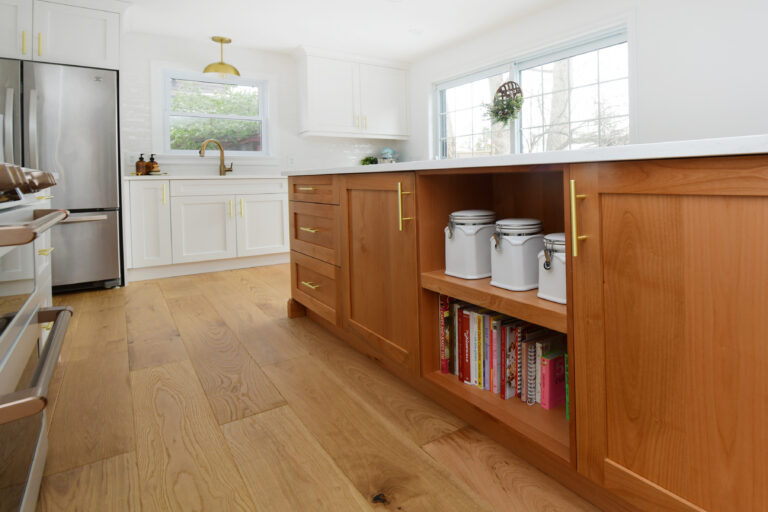How to make a house a home starts with noticing what feels off and knowing how to fix it. Many people move in, unpack, and realize something is missing. Rooms feel cold or generic. Storage feels awkward. Nothing feels personal.
Your cabinets may be a reason for that cold and unwelcome feeling. Cabinets shape how you use a space, how comfortable it feels, and how much it reflects you. They are one of the most powerful ways to turn a house into a home.
Whether you are a homeowner planning your own project or a designer guiding a client, the goal is the same. Make choices that reflect how the people living here actually live. Make the space feel comfortable, functional, and unique.
Here is how you can use cabinetry to make that happen.
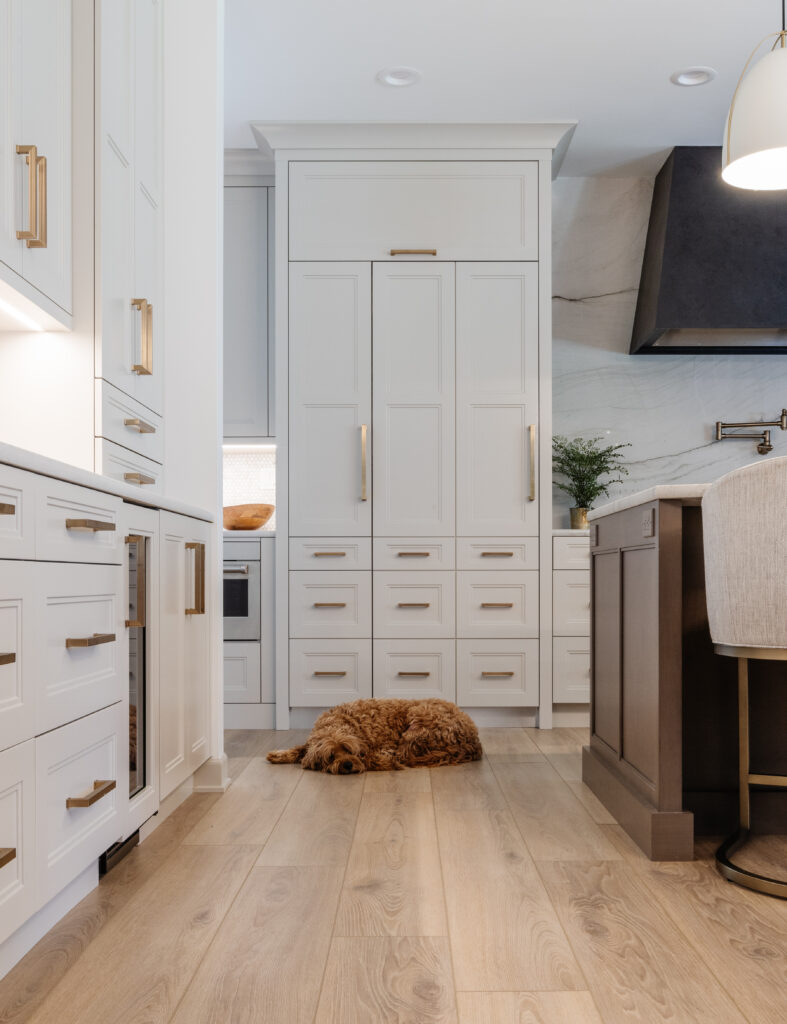
Why Does a House Not Feel Like Home?
It is common to feel like your house is not really yours, even after you move in. Why does this happen:
The finishes reflect the previous owner’s taste, not yours
Storage feels awkward or insufficient
Rooms do not support your daily routines
It feels too bare or impersonal, without any personal story
Cabinetry helps solve all of these problems. Updating cabinets lets you choose finishes and styles that match your taste. It gives you better storage that supports how you actually live. And it adds thoughtful details that make your home feel more like you.

The Kitchen Is the Heart of a Home
One of the best places to start is the kitchen.
This is where people gather, cook, talk, and spend time together. If the kitchen feels awkward or dated, it can make the entire house feel less inviting.
Cabinetry defines your kitchen. It sets the tone of the space and determines how functional it is. A well-designed kitchen with enough drawers, a proper pantry, and comfortable work zones immediately feels easier to use.
If your kitchen has cluttered counters, poor lighting, or not enough storage, cabinets are the solution. Full-height pantry cabinets, appliance garages, deep drawers for pots, and pull-out trash bins all make the space feel better.
As a homeowner, ask yourself what frustrates you in the kitchen. As a designer, guide your client through their cooking and dining habits. Then design cabinetry that supports that.
For example, we worked with a client who hated that her oversized plastic wrap boxes never fit in a standard drawer. So we designed a custom drawer just for that. Small touches like this make a kitchen feel truly yours.
A kitchen that feels good to use makes the whole house feel warmer. If you want to explore why the kitchen is often called the heart of the home, you can read more here.
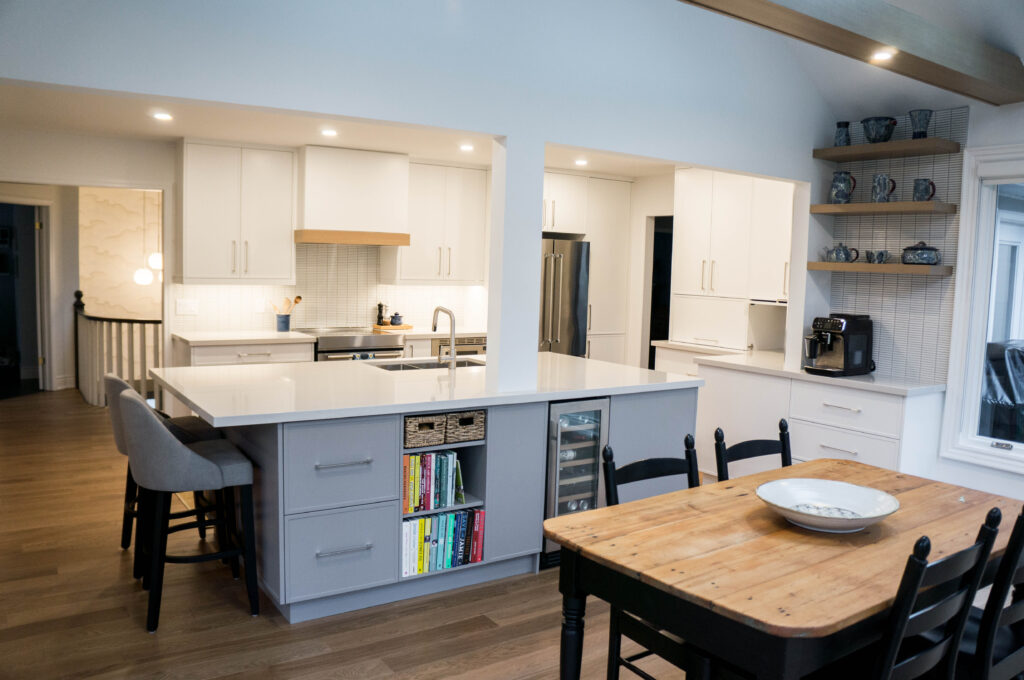
How to Make a House a Home with Custom Cabinets
Here are some tips for homeowners and designers to make that “dream come true” space with custom cabinets.
Start by Defining Function (How YOU Work)
How well a space works is what makes it feel comfortable.
You can have a beautiful kitchen, but if the pantry is cramped, the trash can is in the wrong spot, or the drawers do not hold what you need, it will never feel like home.
Before choosing colors or finishes, think through how the space is actually used. Questions that help:
What gets used most often, and where should it live
What items pile up on counters, and how can cabinets help keep them tucked away
Who uses the space, and does it need to work for kids, guests, or just one person
Many people today also want to include their pets in the design. A custom food and water station for dogs or cats keeps the space clean and intentional instead of an afterthought.
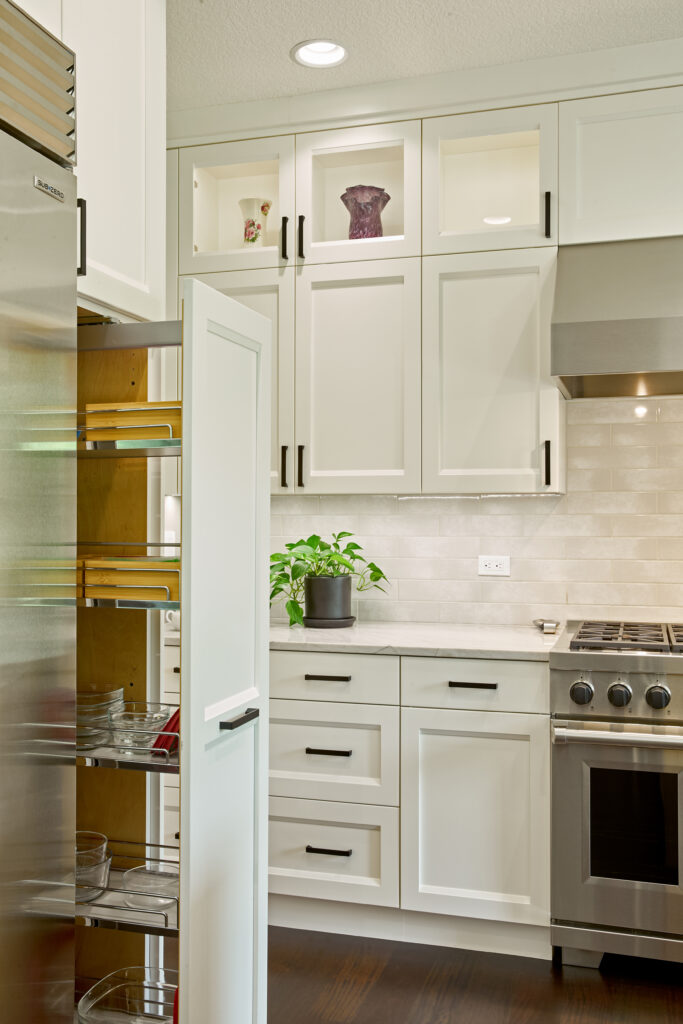
Adding wide drawers instead of shelves, full-height pantry cabinets, appliance garages, hidden charging stations, or even a mudroom locker for each family member can completely change how a space feels.
These are choices designers recommend often because they make daily life easier. A home that functions well is always more inviting.
Customize for the People Who Live Here
No two families live the same way. That means cabinetry plans should not all look the same either.
Custom cabinetry lets you adjust layouts and add features that feel specific to the people who live here. That is what gives a home its personality.
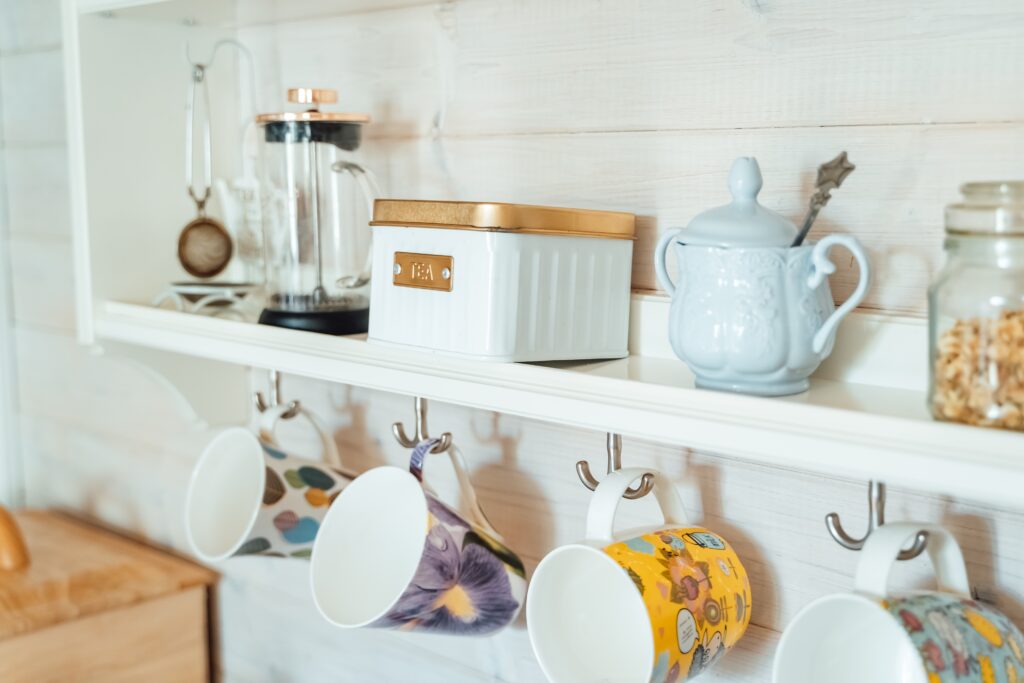
For example:
A family with young kids might need hidden hampers and low drawers for snacks
A frequent entertainer might want a wine fridge, a bar area, and glass-front cabinets for display
A baker might need dedicated drawers for sheets, rolling pins, and mixers
Or you might want a dedicated beverage station — whether it’s for your morning coffee, evening glass of wine, or even a smoothie bar — that reflects what you enjoy most
As a homeowner, ask for these kinds of adjustments. As a designer, bring them up early. Show how these small details improve everyday life.
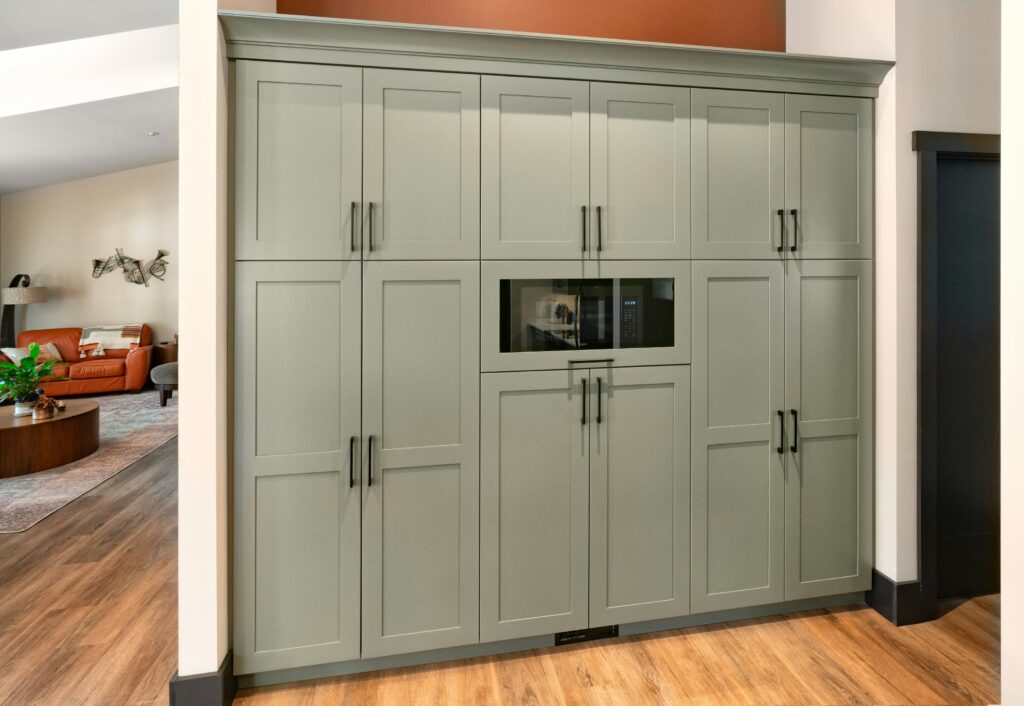
Be Thoughtful About Color and Texture
Cabinetry is a major surface. How it looks affects the entire mood of the room.
Some people want a soft white or light oak. Others prefer deeper walnut or even black. Texture also matters. Do you want smooth painted doors, or woodgrain that adds visual interest and warmth?
If you are advising a client or choosing for yourself, do not default to what is popular. Bring samples into the room. Look at them in natural light. Choose what feels good to you.
Combining finishes, like a painted perimeter and stained island, adds personality without overwhelming the space.
Not sure what your kitchen style is? Take our quick quiz!
Pick a cabinet finish you genuinely connect with, it will help you avoid regrets later.
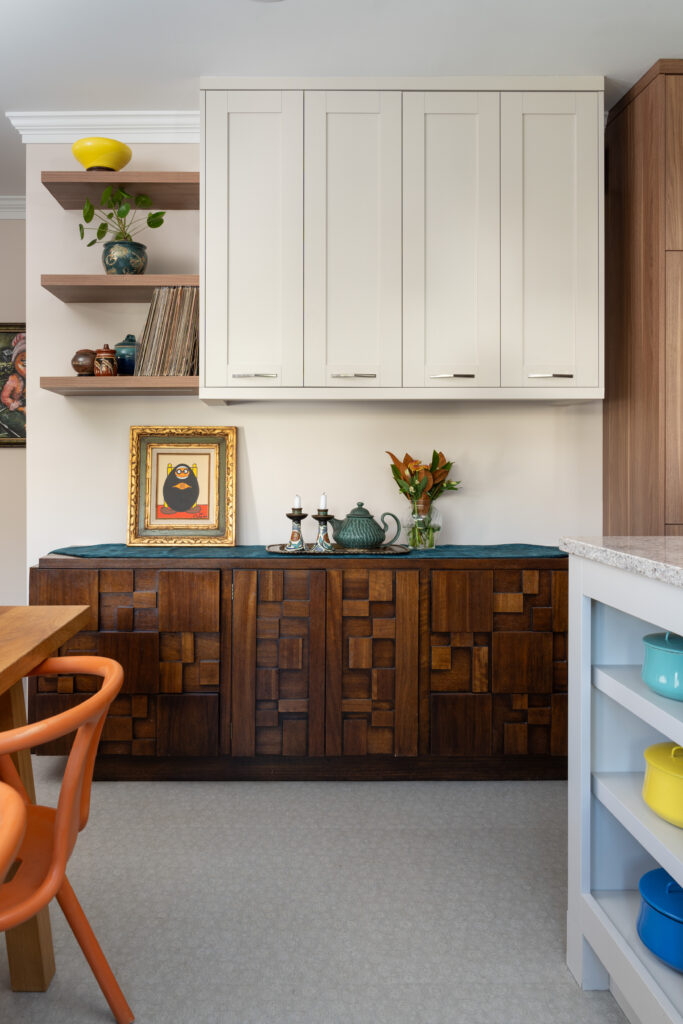
Include Decor and Furniture Pieces With a Story
Nothing makes a space feel like home faster than pieces that tell a story.
Vintage hutches. An heirloom dresser turned into a vanity. A row of open shelves that displays inherited dishware. These kinds of details bring in real warmth and meaning.
Designers can leave room for these elements in the layout. Homeowners can ask how to include something they love.
Blending old and new makes a space feel personal and lived-in.
Plan Lighting for Comfort
Lighting makes a big difference in how a room feels. Cabinetry can help with that.
Under-cabinet lighting makes a kitchen more functional. Interior lights in glass cabinets give a soft glow in the evening. In bathrooms, sconces at face height are more flattering than overhead lights.
Use warm bulbs, not cool ones. Plan for dimmers when possible. Add outlets where you might want a small lamp.
Good lighting makes a home feel calm and comfortable. Bad lighting feels more like an office or hospital, which is the last place we want to imagine being when at home.
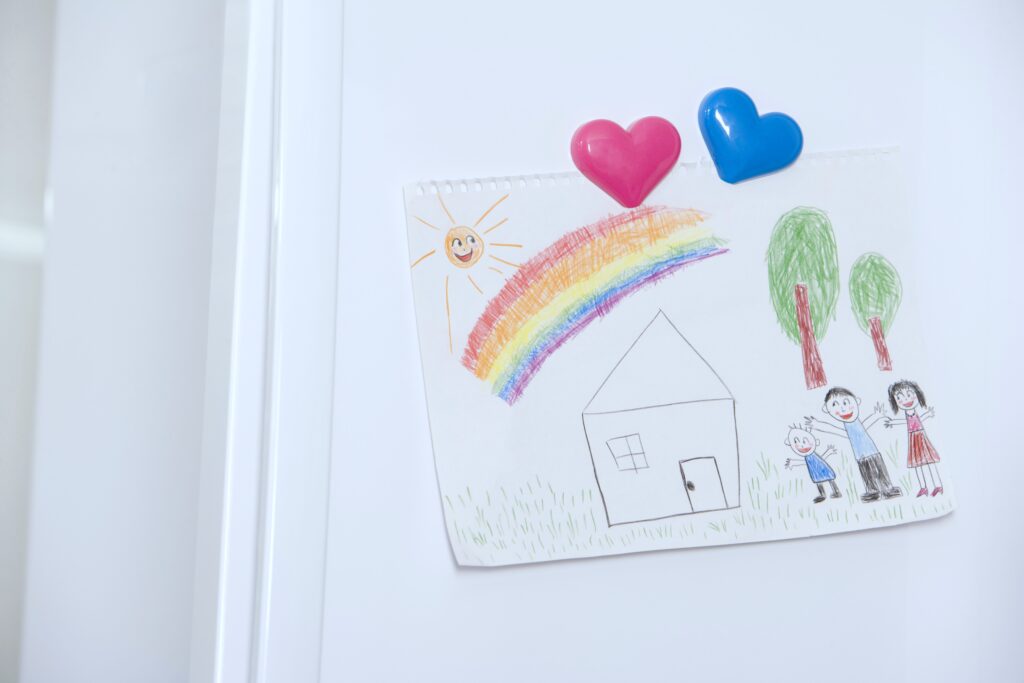
Add Your Personal Photos and Memories
Personal photos and art still belong in your home. These little memories are what make your space feel truly yours.
You can add them in simple ways: stick magnets on the fridge with snapshots of family and friends, hang a small clipboard on the wall to swap out your kids’ artwork, lean a framed photo or postcard between cookbooks on an open shelf.
Sure, enjoy your clean new cabinets for awhile, but don’t be afraid to stick a momento on the inside of your cabinet for a daily reminder.
These little touches of your life make even the most polished kitchen feel warmer. And they are easy to change and update over time.
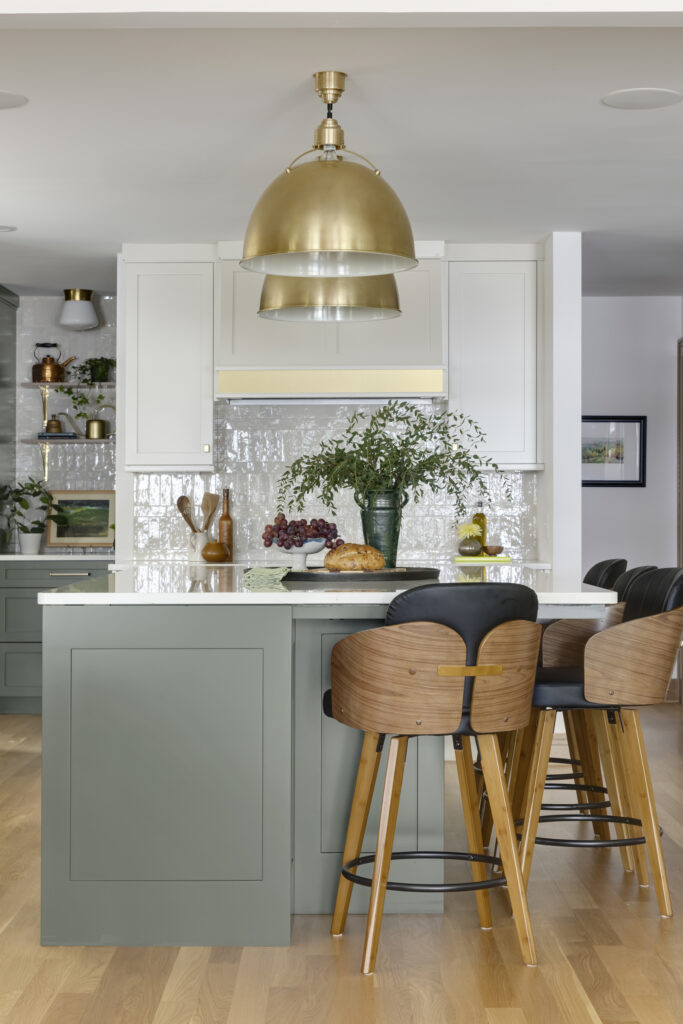
How to Make Your House Feel Like Home with Cabinetry
Whether you are choosing cabinets for yourself or helping a client plan a renovation, the most important question to ask is this: does this feel right?
Cabinetry is where style, storage, layout, and personality come together. When the cabinets support your habits, reflect your taste, and leave room for personal touches, the house becomes home.






